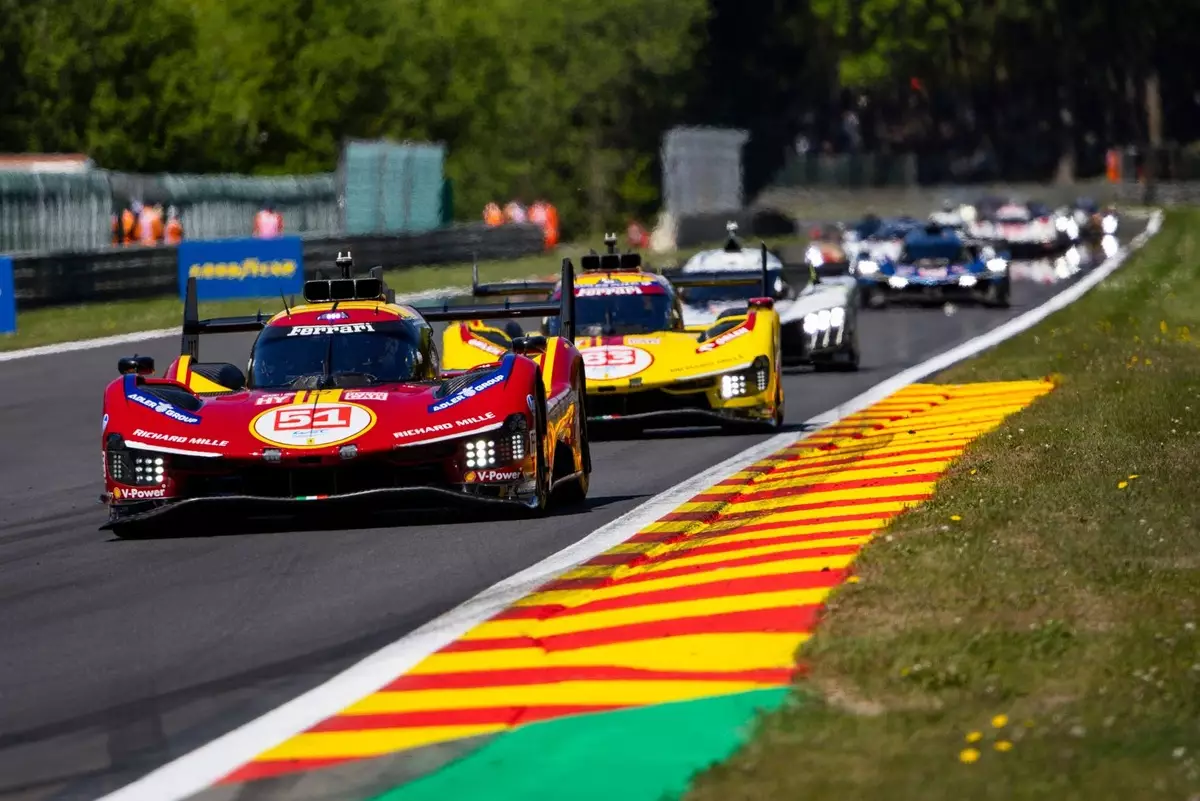The Spa 6 Hours, a highlight of the endurance racing calendar, witnessed Ferrari’s exceptional prowess on the track as their team triumphed over a challenging field. James Calado, Antonio Giovinazzi, and Alessandro Pier Guidi clinched victory in their 499P Le Mans Hypercar, illustrating the Italian manufacturer’s commitment to not just speed, but strategic endurance. With the closest rival, the second-placed 499P, steered by Nicklas Nielsen, Miguel Molina, and Antonio Fuoco, trailing by merely four seconds, the battle was intense, showcasing the competitive spirit and nail-biting excitement characteristic of endurance racing.
In these challenging conditions, the Ferrari team did not merely rely on raw speed; they demonstrated a masterclass in race strategy. While qualifying saw Ferrari lock out the front row, the actual race revealed that the competition, particularly from teams like Alpine, BMW, and Peugeot, was formidable. This juxtaposition highlights the difference between a fast qualifying session and the endurance required to maintain pace and outwit opponents during hours of racing.
Strategic Divergence in the Final Hour
What set this race apart were the critical strategic decisions made in the latter segments. Just under two hours remained when the tension peaked. AF Corse chose to pit their drivers strategically, with Pier Guidi in car #51 dramatically overturning a six-second deficit to his teammate, whom he had followed closely. This pivotal moment necessitated a flexible approach to pit strategies. While one Ferrari pushed forward, attempting to reclaim time lost, the other adopted a more conservative route, focused on fuel conservation.
Their contrasting strategies ultimately served as a fascinating case study of racecraft, where each driver had to tune into the demands of the car while navigating the unpredictable dynamics of competitor maneuvers. Pier Guidi’s effective push meant he could stop for fuel late, allowing him to emerge with a substantial advantage over his teammate, which would prove crucial as the race neared its conclusion.
A Setback for Alpine and Other Contenders
The resilience of competitors like Alpine was on display as they battled fiercely for a top spot. However, misfortune struck when a slow puncture marred their chances just before the critical final hour. Although this setback impeded their progress, it gave Michael Schumacher’s #36 Alpine the opportunity to adjust its pit schedule strategically. This incident underscored how quickly fortune can shift in racing, highlighting the need for both speed and resilience.
The retirement of critical contenders, such as the #20 BMW due to a brake failure and the Peugeot 9X8 2024 LMH suffering collision damage, further compounded the drama. Moments that seem innocuous in an early race swiftly spiral into game-changers as competitors assess and adjust strategies based on unfolding scenarios. All these twists build an intricate narrative of endurance racing where the spirit of competition feels palpable, and every turn can change a driver’s trajectory.
Other Noteworthy Performances
While Ferrari enjoyed the spotlight, Toyota’s performance was commendable but ultimately fell short of podium glory. The GR010 HYBRID LMH, driven by a blend of experienced racers like Sébastien Buemi and Brendon Hartley, demonstrated potential on the current stage but struggled with consistency. Their finishing fourth showed that while they are competitive, they are still searching for that elusive edge that could propel them back into winning contention.
Jota’s Cadillacs, navigating the tight confines of Spa, showcased noteworthy consistency, finishing fifth and sixth. Their reliability served as a reminder that being able to finish consistently and accumulate points can foster growth in the championship standings, laying the groundwork for a stronger future.
The Spa 6 Hours was more than just a race; it was a showcase of tactical acumen, team coordination, and the relentless drive for victory. The performances, from Ferrari’s strategic leaps to Alpine’s heart-wrenching challenges, created a narrative that highlighted the essence of endurance racing—where not only speed but also wits, endurance, and a touch of luck dictate outcomes. As they head towards the next rounds in the championship, teams will dissect these moments, learning from them to aim even higher amid the pressing competition.

